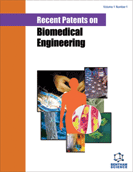Abstract
The anterior cruciate ligament (ACL) is important for knee stability and kinematics. It is also the most commonly injured ligament of the knee and due to its poor healing potential, severe damage warrants surgical intervention including complete replacement. Therefore, investigators have begun to pursue new techniques and devices for the repair, regeneration, and replacement of the ACL. These options involve the use of mechanically functional grafts that are designed to increase implant stability in order to withstand normal mechanical loads (while promoting ligament development in some cases). This article presents background on the ACL and its replacement, novel replacement approaches utilizing a variety of materials, and recent patent coverage.
Keywords: Anterior cruciate ligament (ACL), silk, poly (L-lactic acid) (PLLA), xenograft, scaffold, polymer, tissue engineering, lactic acid, anterior cruciate ligament, surgery, ligament reconstructions, Autografts, immunogenic response, ligament replacements, femoral-tibial articulation, augmentation
 2
2

